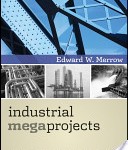Scope of Work – Plans and Specifications
This McLaughlin and McLaughlin (M&M) post is the seventh in a Subject Series Construction Claims and Disputes. This Subject Series contains discussions regarding construction claims and disputes.
Recent and subsequent posts (Parts 6, 7 and the next few) (will) address scope of work within the overall subject of Construction Claims and Disputes. Disputes and claims regarding scope of work are a highly pervasive problem and represent the most common type of claim or dispute. Perhaps 75 to 90% of all engineering and construction claims and disputes involve contract scope of work.
Virtually all disputes and claims arise as a result of departures from the baseline. These variances (cost, time or other) create the dispute. Therefore, understanding the baseline is essential. In construction claims and disputes, the baseline is (almost) always the contract. The contract is the “deal” or the agreement between the parties. While it must meet several legal tests, the contract is the baseline that will be the focus of this discussion. You must have, know and understand the contract, or at least all portions and provisions that relate to scope of work.
In this discussion, the plans and specifications are the scope of work baseline. Typically, the plans and specifications are augmented by other contract documents (such as terms and conditions, site services, execution plan documents and others). Using the term “design specifications,” let us view these documents as “…the specific requirements for constructing, testing, inspecting, and the materials provided for the project” (Brams and Lerner).
The majority of the discussion will address entitlement to recovery (rather than pricing or quantum). [Read more…]








